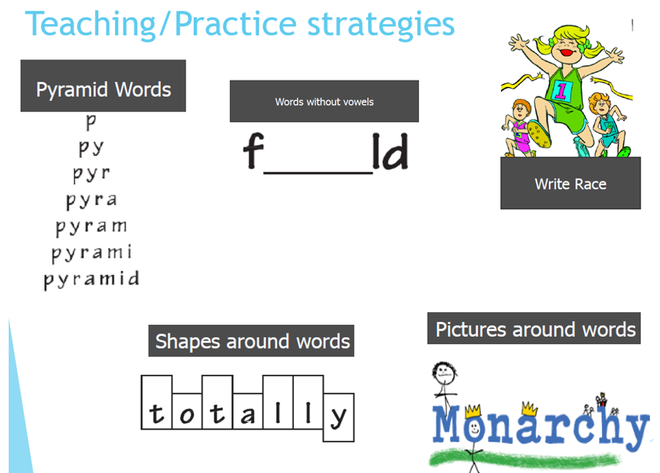Writing
‘We Are Authors’ at Witham Oaks Academy
Writing Intent
Learning to write is one of the most important things that a child will learn. Children use their writing in almost all other subjects of the curriculum. Good writing also gives children a voice to share their ideas with the world.
At Witham Oaks Academy, we aim for children to appreciate and apply rich vocabulary and develop a strong understanding of grammar whilst applying creativity using a range of linguistic conventions for reading, writing and spoken language to ensure students can articulate their needs, passions and desires in life."
Implementation
At Witham Oaks Academy, our curriculum ensures that all children have plenty of opportunities to write for different purposes. We encourage writing through all curriculum areas and use quality reading texts to model examples of good writing.
Writing is centred around a high quality story that captures the children's interest from the outset. The model that is used to teach writing is a personalised approach based around best practice. The school environment enfolds children in stories, settings and language. There is a focus on drama, oracy and language development, equipping children with fundamental knowledge and skills that will enable them to be successful throughout their lives.
Writing is taught through a number of different strategies. We use a method called “Sentence Stacking” which refers to the fact that sentences are stacked together and organised to engage children with short, intensive moments of learning that they can then immediately apply to their own writing.
An individual lesson is based on a sentence model, broken in to three chunks:
- Initiate section – a stimulus to capture the children’s imagination and set up a sentence
- Model section – the teacher close models a sentence that outlines clear writing features and techniques
- Enable section – the children write their sentence following the model and have the opportunity to 'deepen the moment' where they can explore the plot point further and demonstrate their own creative sentences using their previous learning
This part of the unit is heavily scaffolded with lots of teacher input and modelling of vocabulary use, sentence construction and use of grammar.
During the initiate section children jot down their ideas from stimulating resources, such as pictures, music and drama. The children are encouraged to share examples of vocabulary, adverbs, onomatopoeia etc.
During the Model section the teacher prepares children for writing by modelling the ideas, grammar and techniques of writing.
In the Enable section pupils write their own sentences, where children are challenged to independently draw upon previously learnt skills and apply them to their writing during that chunk.
As part of the teaching sequence, teachers plan experience days; sentence stacking lessons and independent writing sequences. Experience days immerse children in experiences linked to their writing and drench them in vocabulary. From the experience days, children take part in the sentence stacking lessons. Sentence stacking lessons with a sharp focus on the craft and construction of high quality sentences.
Following the sentence stacking, children are given the opportunity to show what they have learnt by planning and writing their own independent piece of writing. After they have written their independent piece, their work is marked by the class teacher who identifies different aspects of their written piece to be edited.
Impact
Having followed this approach to developing their writing skills children should be able to:
- write for a range of purposes including diary entries, persuasive letters, stories, poems and recounts to name but a few.
- use their vast knowledge of vocabulary to excite, inform or entertain the reader.
- understand a range of punctuation and the effect it can have on the reader in both writing and reading.
- understand and be able to use a range of grammatical devices.
- understand the various sentence types that can be used to support different genres.
- spell accurately using their phonetic knowledge and apply spelling rules.
- to speak clearly, fluently and coherently, to be able to listen attentively with understanding, pleasure and empathy and contribute to group discussions
- Jane Considine's English Unit Plans Year 1 NC Tracker.pdf
- Jane Considine's English Unit Plans Year 2 NC Tracker.pdf
- Jane Considine's English Unit Plans Year 3 NC Tracker.pdf
- Jane Considine's English Unit Plans Year 4 NC Tracker.pdf
- Jane Considine's English Unit Plans Year 5 NC Tracker.pdf
- Jane Considine's English Unit Plans Year 6 NC Tracker.pdf
Handwriting and Presentation Policy
Teaching of spelling

As a school, we follow the Spelling Shed spelling scheme, online spelling programme used to develop specific spelling rules each week. Children need to learn spelling patterns and rules, statutory words, common exceptions and personal spellings and the Spelling Shed programme allows us to do this in a little but often structure, allowing the children to revisit and review their learning, as well as learning new strategies to apply in their writing.
Every child has an individual log in for Spelling Shed. The log in details should be stuck in their Pupil Planners. This is an online service which is designed to be an enjoyable and engaging way for children to develop their spelling skills online.
Class teachers will set a list of words for the children to learn which will be the spellings they are focusing on that week in class. These will appear on the child’s home screen, if set. If these specific words are not set, a child is still able to practise and play relevant spelling words for their year group. The stages reference the year group e.g. stage 3 = Year 3. It is so important to keep revising previous year group’s spellings throughout a child’s spelling journey.
Lessons involve the explicit teaching of morphology, orthography and etymology needs while giving 100% National Curriculum coverage.
Each week, spellings will consist of 6 words relating to the spelling pattern being studied and 4 spelling foci previously learned. These are revisited through retrieval practice and teachers ensure pupils apply them across the curriculum. Teachers should teach the words in the lists given from Spelling Shed each week, using syllables and given strategies specified in recent training to help support their teaching.
Learning spellings
Learning needs to happen in school and at home. There is little evidence, though, that the traditional practice of learning spellings (usually 10) at home and being tested on them (usually on a Friday) is effective. However, there is a high expectation within the new National Curriculum that pupils will learn many increasingly complex words. Within each spelling session a range of strategies for learning spellings are introduced and practised. This enables pupils to choose the strategies they find most effective for learning different words.
Tips for learning spellings at home
- Learning at home needs to be an extension of the practice in school.
- Consider limiting the number of words to five or less a week to ensure success and enable deeper learning making sure pupils and parents have access to the range of learning strategies which have been taught in school, to use in home learning
- assessing spellings in context, for example: learning spellings in a given sentence, generating sentences for each word, assessing through unseen dictated sentences
- keeping an ongoing record of words learnt and setting very high expectations of correct application in writing once a word has been learned.
The learning strategies below can be used to support learning spellings at home and in school.

